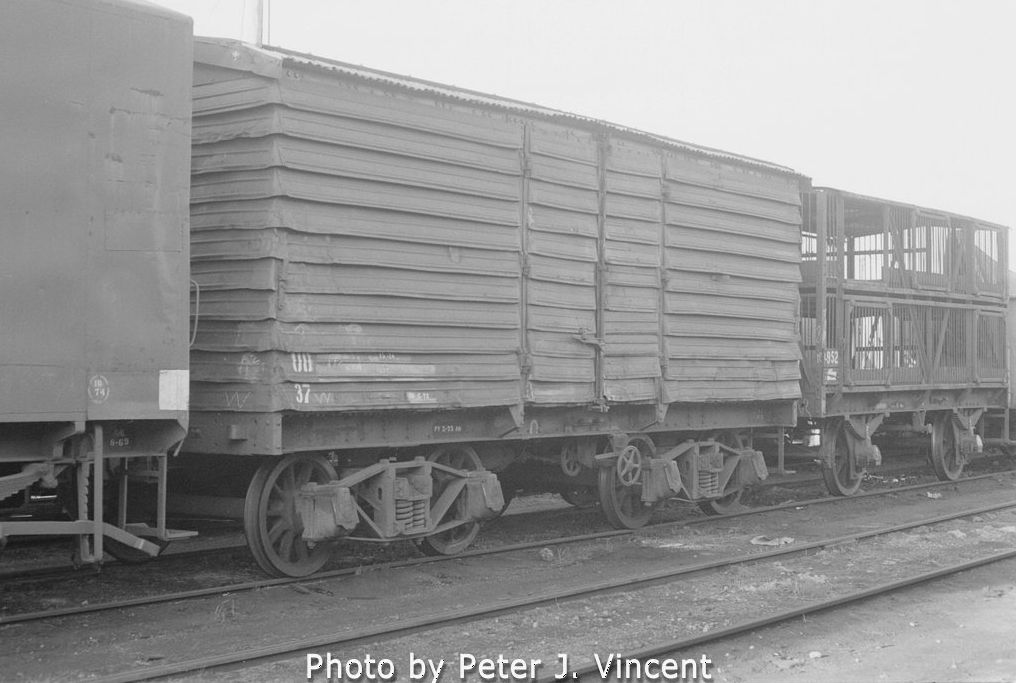

UB
Six wheel _U__ louvre vans were being converted to four wheels and auto-couplers in 1933/34. Opportunity was taken across two projects to convert 60 No. U louvre vans to bogie, auto coupled stock. The projects spanned one block of 50 vans and a followup block of 10 vans. The conversion was to autocoupler 'pockets' with transition hooks used to match existing hook coupled stock. At required times through to the 1950's, the transition hooks were replaced with auto couplers.
The UB numbers were 1 to 60.
UB vans found service behind railmotors on lightly used branch lines. They were originally fitted with diamond frame bogies. These were the bogies that were dispaced from _QR_ open wagons by barframe bogies. One can wonder whether the intention was to use the bogies up, thereby saving money in the autocoupler project.
Probably about the 1940's, some UB's were fitted with welded steel frame bogies more suitable to passenger speeds. And for use on passenger trains and railmotor traffic, the vans were fitted with side lamp brackets and tail discs. Hence these fittings still attached when running as UB vans in the late 1970's.
From 1955, the railways introduced a code system to identify vehicle speeds. This was an urgent consideration as the new 'standard guage' link was under construction and fast goods vehicles were to be marshalled in trains. The UB vehicles in passenger traffic were coded _UP_, the "P" denoting passenger speed. With the reduction of UP traffic in the early 1960's, the vans were recoded back to UB.
In the early 1960's, some UB vans were fitted with fast freight bogies and recoded to _UF_.
VLAA
The last UB in service, UB 56 was recoded to VLAA 56 in 1981. Documents indicated the code for UB would be 'VLLA', but this was a typing mistake.
The van was out of service by 1984.
In 1992 is was sighted at Spotswood Workshops, held for preservation.